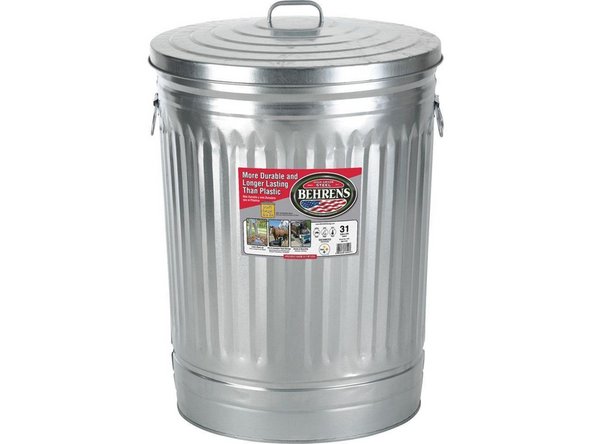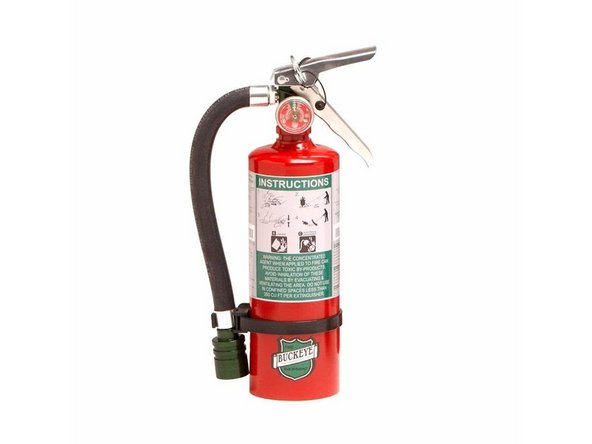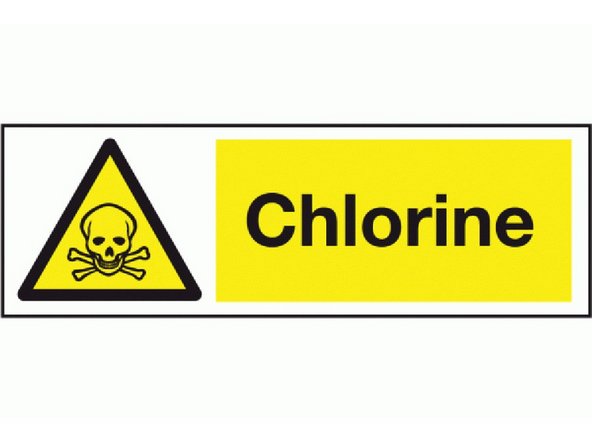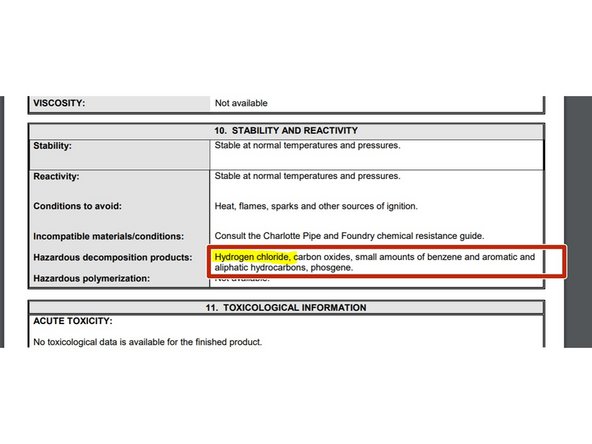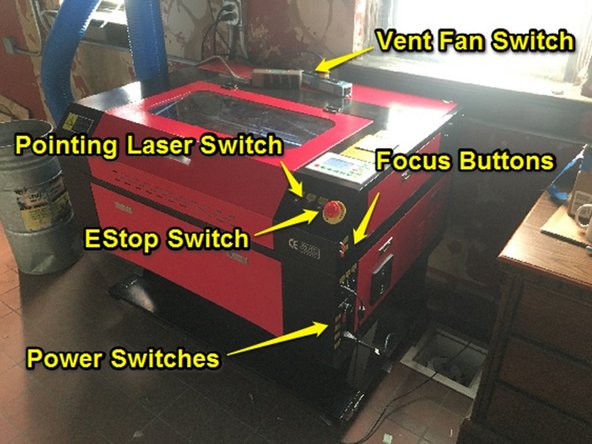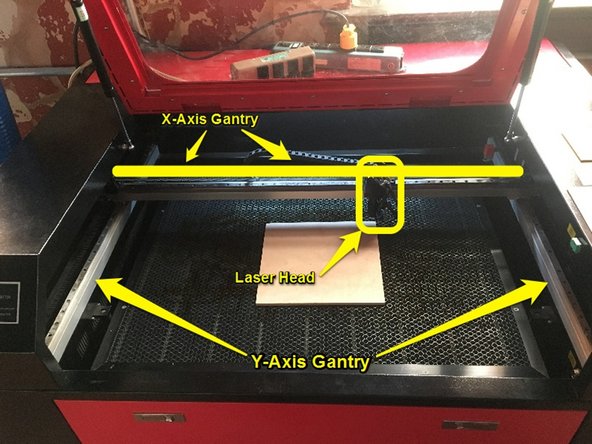-
-
The laser cutter is a Class I CO2 laser device, when all of its panels are closed and interlocks are not disabled.
-
The CO2 laser energy is in the infrared spectrum and is invisible to the naked eye. A visible laser is also in place to allow for visualizing the target of the laser.
-
A Class I laser is safe under all conditions of normal use. This means the maximum permissible exposure (MPE) cannot be exceeded when viewing a laser with the naked eye or with the aid of typical magnifying optics (e.g. telescope or microscope).
-
Our laser cutter is equipped with a pass-through feature that allows lasing materials larger than the cutting area. In this mode, the interlocks are disabled and the laser beam is not confined to the machine. In this mode, the laser is a Class IV laser device!
-
Because we do not have protocols in place for containment of a Class IV laser device, this laser cutter may not be operated with any of its doors open.
-
Operating the laser cutter with its doors open puts not only you at risk, but also everyone else using the space. Laser energy travels a very far distance before losing power.
-
-
-
The biggest danger of using the laser cutter is fires. Certain materials are more likely to flame up than others, but any material could unexpectedly ignite.
-
For this reason, the laser cutter MUST be watched the ENTIRE time it is cutting.
-
-
-
In the event of a fire:
-
Lift the lid of the machine: This will stop the laser cutter, and the disruption of airflow is often enough to put out the flame.
-
Blow out the flame: Often this is all it takes to put out a laser fire if the fire is caught early.
-
Remove the material: A metal fire can is located next to the machine for this purpose. Remove the material and place it in the can to safely extinguish.
-
Halotron Fire Extinguisher: A halotron fire extinguisher is located near the laser cutter. This fire extinguisher will not damage the optics or the electronics of the machine.
-
Dry-chem Extinguisher: Dry chem extinguishers are located at strategic places throughout the space.
-
-
-
Certain materials cannot be cut or etched using the laser cutter because they contain chemicals that would harm the laser or members nearby.
-
Materials containing Chlorine, in particular, 'CANNOT be cut or etched on the laser. The chlorine gas released during cutting is corrosive to the laser optics and can harm people exposed to it.
-
-
-
Always check the composition of materials before using them in the laser cutter.
-
MSDSs can be a good source of information about the decomposition hazards of materials.
-
Check for hazards to firefighters or hazardous products of decomposition.
-
The MSDS shown here is only an example (this is the MSDS for PVC pipe), you may have to do some sleuthing to find the information you're looking for.
-
When in doubt about any material, post a message on https://talk.lansingmakersnetwork.org asking for help!
-
-
-
Machine overview
-
Accessories switches: Controls water, air, and ventilation.
-
Pointing Laser: Turns on and off the visible red pointing laser.
-
Focus Buttons: Raise and lower the platform for focusing.
-
EStop Switch: Cuts power to the machine in the event of an emergency.
-
Power Switches: Power switches for main power, laser supply, and internal lighting.
-
-
-
The X-Axis gantry allows the laser head to move left and right.
-
The Y-Axis rails allow the X-Axis gantry to move forward and back.
-
Laser head: The business end of the machine where infrared and visible laser light are emitted.
-
-
-
For clarification on anything you find in an SOP or if you run into an unexpected condition on the machine, please create a topic on https://talk.lansingmakersnetwork.org. We're here to help!!
-
Cancel: I did not complete this guide.
2 other people completed this guide.



